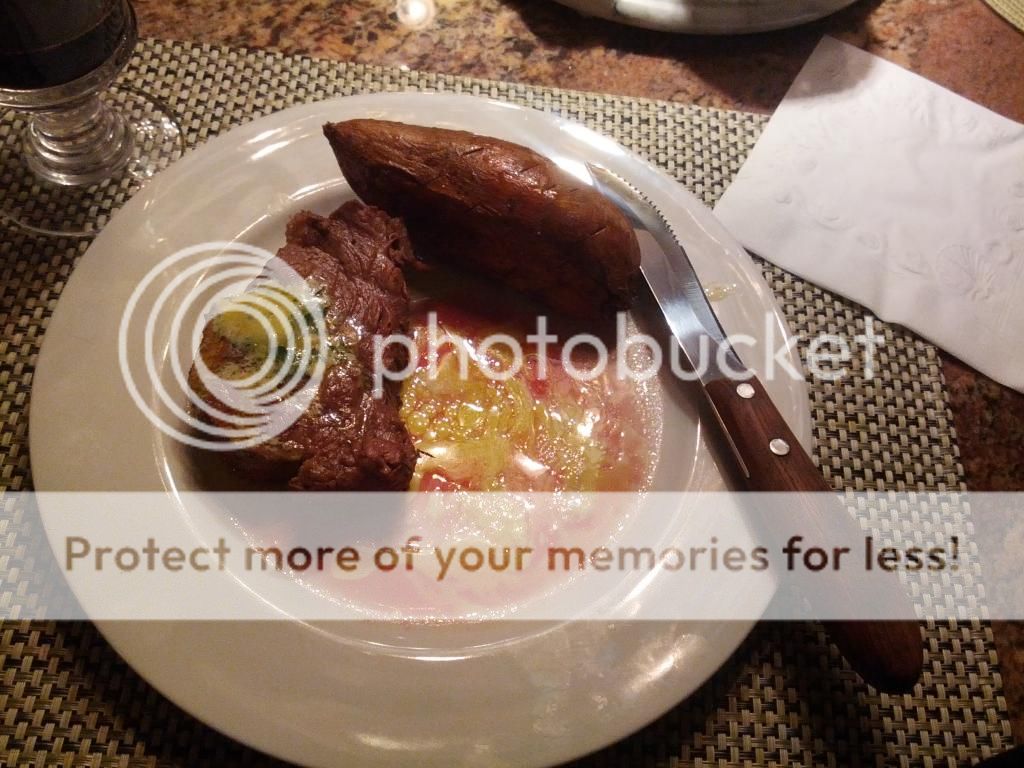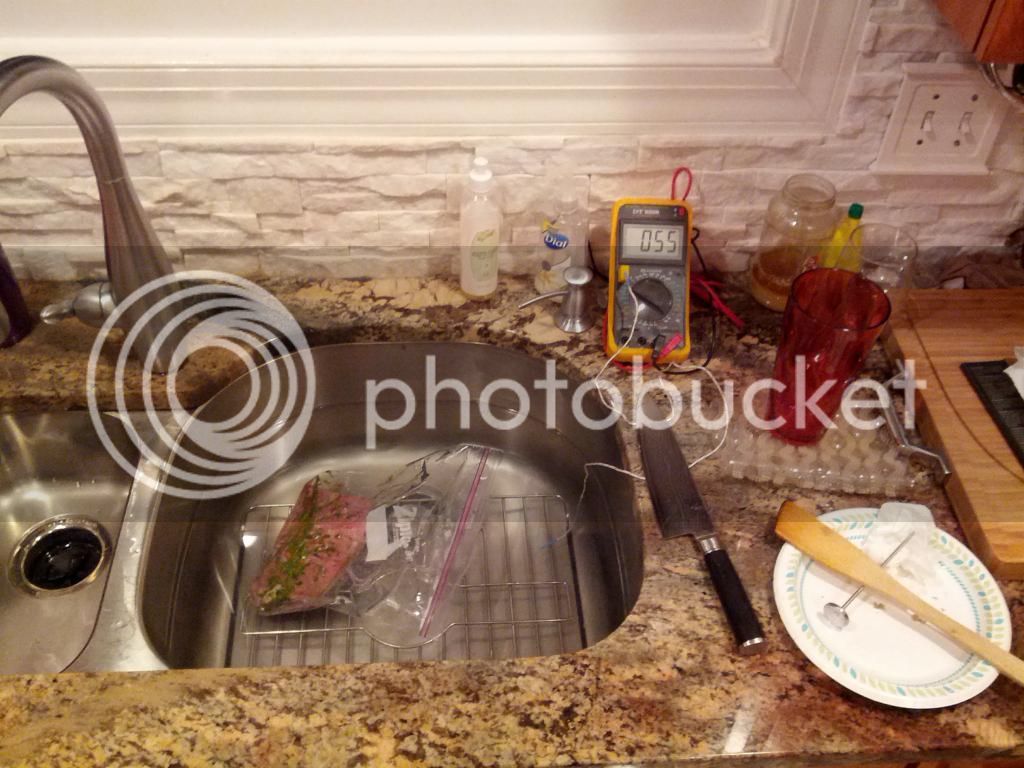I agree with Hambone. Cook your tenderloin in the morning. Buy a bag of ice from the gas station and fill the other side of your sink with the ice and water. After the 75 min in the bath, move them to the ice bath, then after 20 min or so you can move them to the fridge. From there you could either portion and sear, or back into a bath to bring up the temp close to your finishing temp, remove from the bag, portion and finish.
If you have a cast iron pan, do them in that instead of the electric grill. If you don't, go buy one tmrw. They aren't expensive and incredibly useful. Put that sucker in your oven cranked to the max to preheat it, then move to your stove top and sear. With the cast iron smoking, you just need a touch of oil, but after the temperature comes down (by adding the steaks) you can put some pats of butter in the pan with them and baste with the extra butter. If you start with butter in the super hot pan you will just create a ton of smoke and maybe start a fire. The benefit of portioning the steaks cold, letting them come up to room temp and then searing them, is you have extra time for them to be in the pan and get a nice crust. With a hot cast iron, by the time you get a nice crust, the internal temp should be close to what you want to serve at. After searing, let them rest, plate all your other components after finishing the steaks and by the time you are done, they should be ready. Plate them, top with butter and out they go.
I'm not sure if the truffle oil is doing you much good in the bag. I would incorporate it into your steak butter instead.
So tmrw morning:
1. Put steaks in your sous vide sink bath.
2. Go out and buy ice and cast iron pan.
3. After 75 min, shock in ice bath, then stash in fridge.
4. When you are prepping dinner, remove tenderloin from fridge, portion and let them come to room temp.
5. While prepping your sides, preheat cast iron pan in oven or on stove top.
6. When ready for the steaks, season, put pan on stove top, add oil and steaks.
7. Add butter, baste steaks with butter.
8. When seared on both sides, transfer to another tray/pan to rest.
9. Plate other components.
10. Plate steaks, add butter.
11. Put it in your face.








